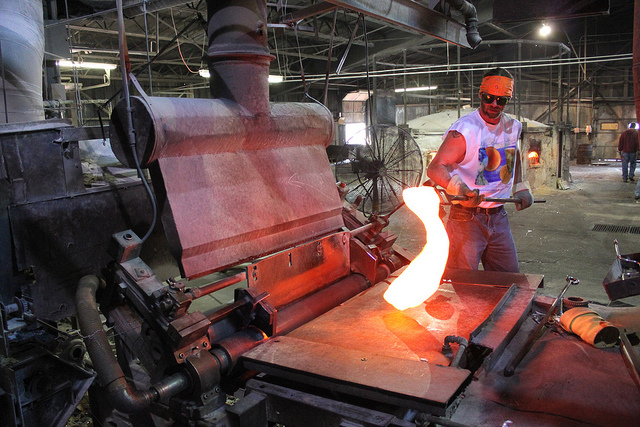
Study stands in contrast to a falling unemployment rate.
The White House’s Council of Economic Advisers (CEA) on Monday issued a report that raised a few eyebrows: The labor force participation rate for American men is dropping.
This finding is a head scratcher. Unemployment is down. Ylan Mui at the Washington Post notes that the jobless rate in 2010 was a full 10 percent; today, it’s below 5 percent. That’s good, obviously.
But that 5 percent requires a caveat, which is: The unemployment rate only accounts for those of us who are actually looking for work. So if, for whatever reason, you are out of a job and aren’t looking for one, you aren’t counted in this figure. That skews the number a little bit, and it makes this CEA report interesting.
The New York Times points out that in 1964, 97 percent of men (with a high school degree or less) in their prime working years (ages 25 to 54) had a job or were out there humping it for one. Today, only 83 percent of this group is engaged.
That means America’s prime-age labor force participation rate among men is only higher than two other countries in the Organization for Economic Co-operation and Development (OECD) – Italy and Israel.
The CEA paper offers up a few possible explainers. Here’s one:
States spends 0.1 percent of GDP on so-called “active labor market policies” such as job-search assistance and job training that help keep unemployed workers connected to the labor force, much less than the OECD average of 0.6 percent of GDP, and less than nearly every other OECD country.
Another is that too many men in America have been or are in prison:
By one estimate, between 6 and 7 percent of the prime-age male population in 2008 was incarcerated at some point in their lives. …These men are substantially more likely to experience joblessness after they are released from prison and in many States are legally barred from a significant number of jobs.
And another, as spelled out by Mui:
It’s a theme seen time and again in our increasingly globalized and high-tech economy: Blue-collar jobs that were once the cornerstone of the middle class get outsourced or replaced by automation.
There’s a ripple effect, too. When a manufacturing plant shuts down, for example, the laid-off employees may wind up in lower-skilled jobs, displacing those workers and potentially forcing them out of the labor market.
The lower the wage, the more likely workers are to pass up the job altogether.
Put simply, a big chunk of these nonparticipants used to work in the American manufacturing sector.
Look, not everyone in America is going to get a graduate degree … or even a four-year degree, for that matter. If we want to shore up employment for those with lesser levels of educational achievement, we could stop putting so many of those people in jail – but we’ll leave that argument for another website.
But that’s not all we could do. We could also fix a federal Trade Adjustment Assistance program that is poorly managed. And we could stop signing trade deals that are virtually guaranteed to stifle manufacturing employment in the United States.
Policy choices have consequences! And after years and years of liberal trade policies that have traded market access – and factory jobs – for global influence, we have a result: fewer work opportunities for dudes with fewer degrees to their name, and thus, a lower workforce participation for working-age men.
Check out the report here.
